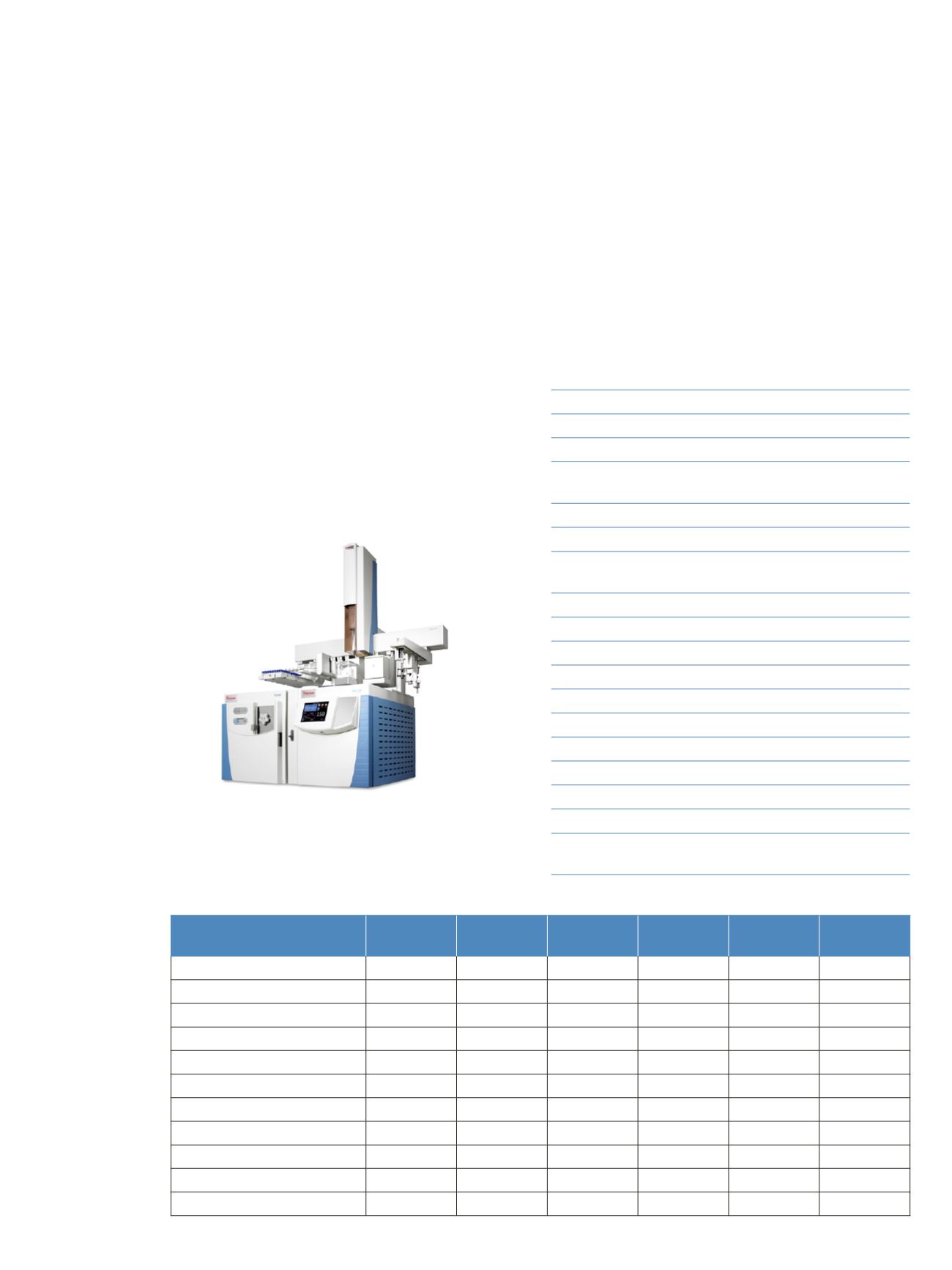
2
This application note describes the GC-MS/MS analysis
of extracts from spices as a highly selective tool for
the quantitative determination of the representative
ingredients of natural active spice ingredients capsaicin,
piperine, thymol, and cinnamaldehyde.
Experimental Conditions
All measurements have been carried out using the Thermo
Scientific™ TSQ 8000™ triple quadrupole GC-MS/MS
system equipped with the Thermo Scientific™ TRACE™
1310 GC with SSL Instant Connect™ SSL module and
Thermo Scientific™ TriPlus™ RSH autosampler. The
method details are given in Table 1.
The TSQ 8000 MS acquisition method has been
developed automatically by AutoSRM, a unique MS/MS
method development tool included in the TSQ 8000
software suite. The AutoSRM method development
starts from a standard solution vial in the TriPlus RSH
autosampler and automatically determines retention
time, the two most suitable precursor and product ions,
and optimizes the collision energy for best sensitivity.
The program runs automatically and provides the SRM
acquisition method based on the timed-SRM mode. The
choice of timed-SRM dispenses with the tedious manual
search and setting of several segment breaks, as required
by former triple quadrupole systems. Timed-SRM uses a
short window around the compound retention time, the
duration of which is user definable. Once the AutoSRM
process is completed, the generated acquisition method as
shown in Table 2 is used immediately for sample analysis.
The molecular structures of the natural active compounds
under investigation in this application note have very
polar groups. These polar sites pose a special challenge
to the GC system because of their active nature and long-
term instability, especially in real life matrix samples.
Table 1. TRACE 1310 GC and TSQ 8000 MS/MS method parameter
TRACE 1310 GC
Injection mode
splitless
Splitless Time
1.0 min
GC Column
Restek™ RTX™-5Sil MS,
15 m × 0.25 mm × 0.25 μm
Carrier gas
He
(
99.999 %
)
Flow
1.2 mL/min, constant flow
Temperature program
50 °C, 2 min
20 °C/min to 300 °C, 2 min
Transfer line temperature 280 °C
Total analysis time
14.6 min
TriPlus RSH Autosampler
Injection volume
1 µL
TSQ 8000 MS/MS
Ionization mode
EI, 70 eV
Ion source temperature 250 °C
Scan mode
SRM using timed SRM
SRM transition setup
automatically build-up by AutoSRM
software, transitions see Tab.2
Table 2. MRM acquisition method created by AutoSRM
Compound name
CAS
Number
RT
Precursor
Mass
Product
Mass
Collision
Energy
Peak
Width
[min]
[m/z]
[m/z]
[V]
[min]
Thymol
89-83-8
6.24
135.1
91.1
15
5
Thymol
89-83-8
6.24
150.1
135.1
10
5
α
-Methyl-trans-cinnamadehyde
101-39-3
6.51
145.1
91.1
25
5
α
-Methyl-trans-cinnamadehyde
101-39-3
6.51
145.1
115.1
20
5
Capsaicin
404-86-4
12.64
137.0
94.0
20
5
Capsaicin
404-86-4
12.64
137.0
122.0
15
5
Dihydrocapsacin
19408-84-5
12.89
137.0
94.0
20
5
Dihydrocapsacin
19408-84-5
12.89
137.0
122.0
15
5
Piperine
94-62-2
14.08
200.8
115.1
20
5
Piperine
94-62-2
14.08
285.0
172.7
10
5
Figure 1. TSQ 8000 with TRACE 1310 GC and TriPlus RSH
autosampler


